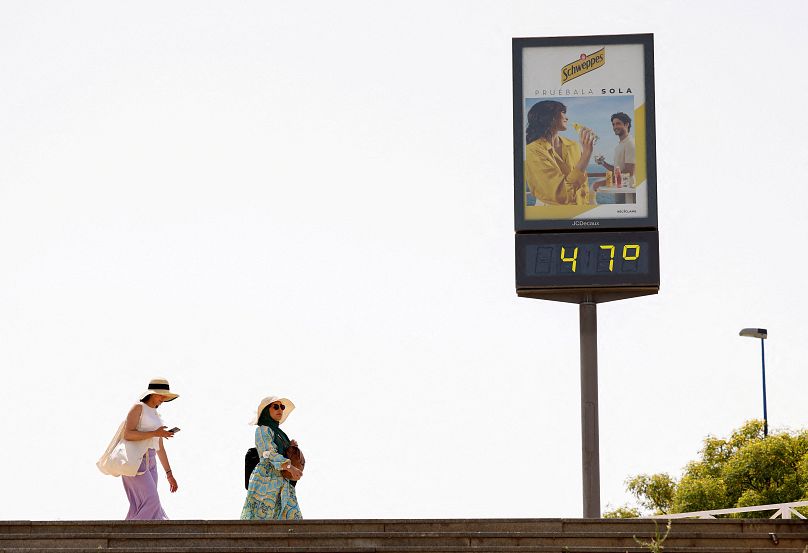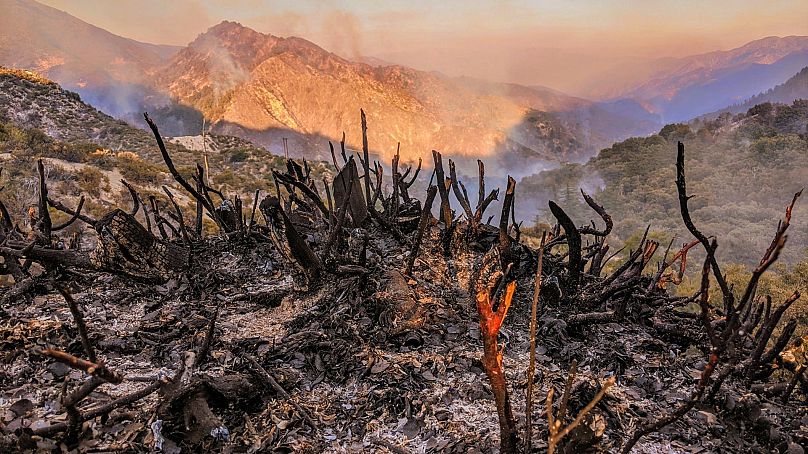The first-of-its-kind initiative predicts that the heatwave could be more intense than Heatwave Zoe was last summer.
The southern Spanish city of Seville has named an extreme heat event for the second time ever.
Heatwave Yago reached the warning system's maximum level of 3 this week peaking on 26 June with temperatures of over 40°C. It is expected to be more intense than Heatwave Zoe, the world's first-ever named heatwave in July last year.
This heat wave poses serious health threats to Sevillians, proMETEO and the City of Seville warn. It has issued guidance to residents - particularly the most vulnerable - so they can prepare and take precautions.
Why is Seville naming its heatwaves?
Seville became the first city in the world to start naming and classifying heatwaves in July 2022 with Heatwave Zoe.
The pioneering system was unveiled on 21 June 2022 as Spain endured its earliest heatwave in 40 years.
Located in the Guadalquivir River valley in Andalusia, the southern city is one of Spain’s hottest places, and a hugely popular tourist destination.
"We are the first city in the world to take a step that will help us plan and take measures when this type of weather event happens," Mayor Juan Espadas said.
The pilot project was developed by the Adrienne Arsht-Rockefeller Foundation Resilience Center in collaboration with the University of Seville and the City of Seville. It has three categories and will alert the population up to five days in advance of a heat event.
Heatwaves designated as Category 2 or 3 events will be named in reverse alphabetical order. The first five will be called Zoe, Yago, Xenia, Wenceslao and Vega; names sure to be familiar to Sevillians before long, as temperatures continue to soar.
What is the benefit of naming heatwaves and storms?
A key rationale behind proMETEO Sevilla is that it will link weather forecasts to health warnings.
"This new method is intended to build awareness of this deadly impact of climate change and ultimately save lives," says Kathy Baughman McLeod, director of Arsht-Rock, a think tank which develops solutions for climate risks.
Each of the three categories (one being the least severe) will trigger a distinct set of safety measures and policies, such as the opening of city pools and water parks, or the activation of community health workers who will check on elderly and other at-risk individuals.
Naming heatwaves also spells out an important reality: these are no longer “freak” weather events.
While people have been naming storms, tornadoes and hurricanes for centuries, the US National Hurricane Center only began officially naming tropical cyclones back in the 1950s.
The practice is particularly useful when two storms are taking place at the same time, and is thought to raise awareness and help prepare for incoming weather systems.
However, scientific data is lacking on whether naming storms helps save lives.
“The National Weather Service is not aware of any research or evidence that suggests naming heatwaves would raise awareness about heat-related risks,” Kimberley McMahon, a NWS Public Weather Services programme manager told The Guardian.
But she concedes that early warnings can help people to prepare for extreme weather, “Even knowing the potential for a heat event or abnormally hot summer can allow preparations to occur further in advance.”
Where else is considering naming heatwaves?
The US state of California is also introducing new laws to name heatwaves after its record-breaking drought entered a third year in 2022. The western state experienced its hottest summer on record in 2021, followed by the driest start to a year in recorded history.
According to the National Weather Service, heat-related deaths are now the biggest weather killer in the US. They are responsible for more deaths every year than any other extreme weather pattern - including flooding, hurricanes and tornadoes.
An average of 138 American citizens die as a result of extreme heat every year. And researchers hope that naming heatwaves will raise public consciousness of their dangers and environmental root causes.
Alongside naming, the US state is also looking at ranking its heatwaves so that people are aware of the severity of incoming weather systems. It makes it the first state in the country to implement such a system.













